[ad_1]
Four years ago, Hong Kong International Airport’s Terminal 2 was primarily the domain of low-cost carriers and very much the poor cousin to Terminal 1.
But by the end of next year it will be reborn as a larger and thoroughly modern high-tech terminal with a new role to play in transforming HKG “from a city airport to an airport city.”
That transformation isn’t just about T2, which currently looks like a multi-billion dollar Meccano set slowly rising opposite T1 as the old terminal is rebuilt from the ground up.
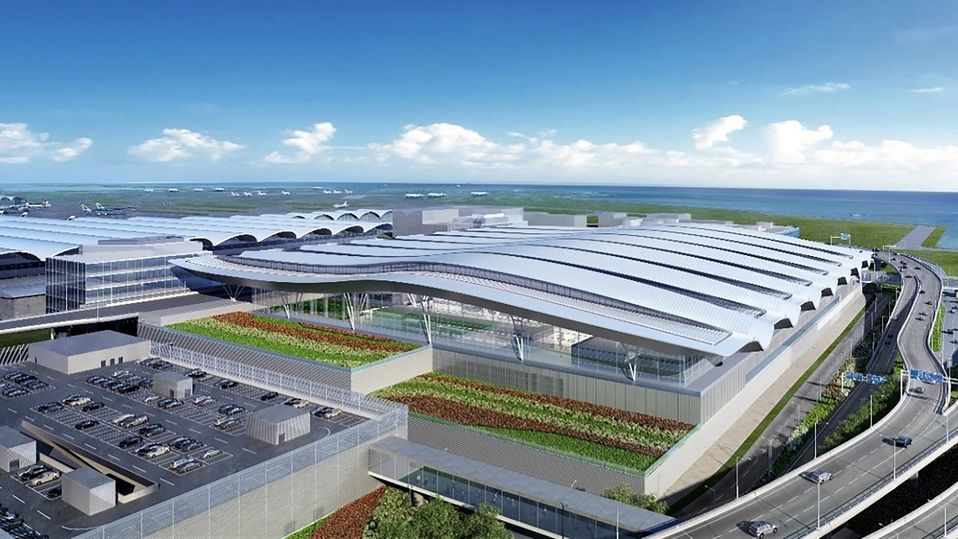
Terminal 2, with its own take on HKG’s swooping rooflines, is expected to be ready by the end of 2024.
This blue sky future is also framed by the airport’s third runway – extending 3.8km across 650 hectares of reclaimed land in parallel with its twin predecessors – and the ambitious SkyCity precinct of hotels, commercial towers and the 11 Skies mega-mall.
When both terminals and all three runways operating in tandem, HKIA will be able to handle 120 million passengers per year – with an increasingly large number of those travelling to and from China’s Greater Bay Area – although exactly how Terminal 2 will fit into this jigsaw puzzle remains to be seen.
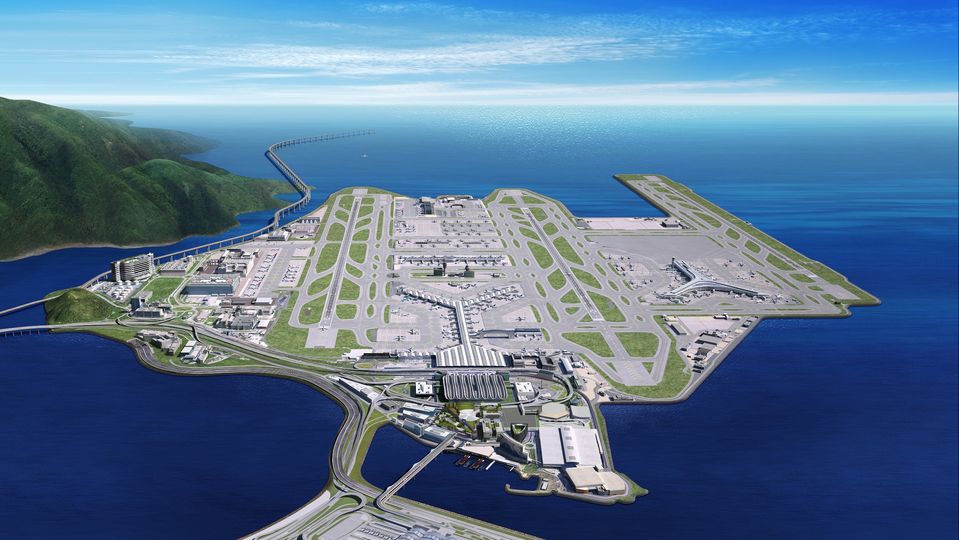
The new shape of Hong Kong International Airport come 2025.
For starters, although the terminal will be ready and stress-tested by the end of 2024, the Airport Authority Hong Kong – the government body which operates the airport – tells Executive Traveller T2 might not welcome its first passengers or flights until early 2025, depending on demand.
That’s despite the confident predictions of Vivian Cheung, Chief Operating Officer for AAHK, that “by end of next year we are going to have 100%” of passengers back, compared to the end of 2019.
It’s a forecast shared by Cathay Pacific, which means the timing for Terminal 2 and the three-runway system couldn’t be better.
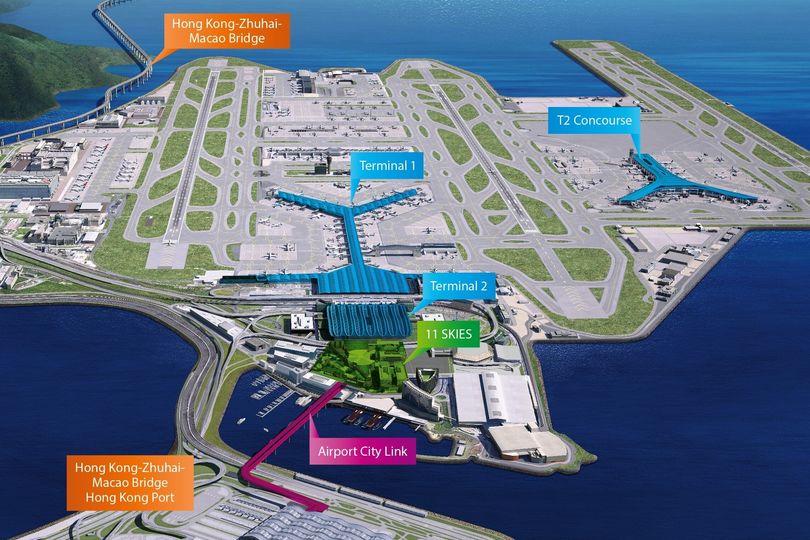
Travellers will check in at Terminal 2 but catch their flights from the distant T2 Concourse.
“The construction (of T2) is pretty much on time, and our target is by the end of next year, all the three runways will be operating together,” Cheung told Executive Traveller at a roundtable during the airport’s Aviation Day summit last week.
“But we need to consider ground handling capability and whether we really need this (T2) facility at that time.”
Whenever the ribbon-cutting and obligatory Lion Dance takes place, flying into and out of Terminal 2 will be a very different proposition to Terminal 1.
While passengers will check in for their flights and go through security and immigration screening at Terminal 2, their flights will depart from a distant ‘midfield concourse’ sandwiched between the eastern ends of the second and third runways.
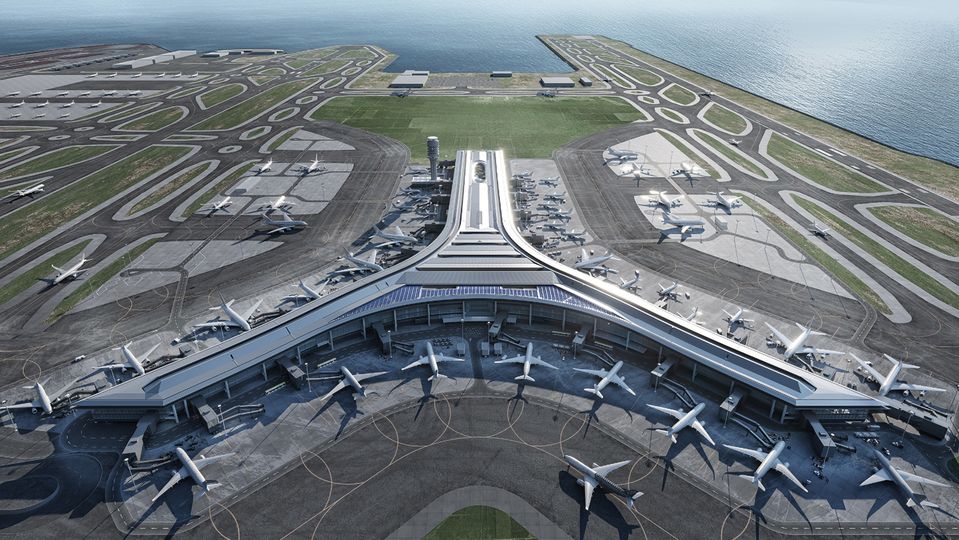
The dedicated Terminal 2 concourse will sport some 60 aircraft gates plus lounges, shops and more.
An extension of the airport’s driverless Automated People Mover line will whisk travellers between T2 and the concourse’s 60-odd gates, while their luggage will hurtle along on a dedicated ‘high-speed’ baggage system.
However, for travellers who need to transit between terminals for connecting flights, there will be no ‘interchange’ station between the T1 and T2 APM lines except at T2 itself.
An alliance-based terminal?
It’s expected the triangle-shaped concourse will host airline lounges for premium travellers and frequent flyers, although which airlines will be based at T2 remains to be seen.
Lavinia Lau, Chief Customer & Commercial Officer for Cathay Pacific, tells Executive Traveller the airline and its low-cost arm HK Express will both remain at T1, with plans to open an all-new flagship lounge and potentially an arrivals lounge at T1 as other airlines move out.
So which airlines might be relocated to Terminal 2 and its sleek-if-seperate concourse?
Cheung indicated those discussions are underway, with a “task force looking at (airline) market share, what’s the best way to split them into different terminals.”
“A very important thing is that we are a hub. Connectivity is so important (and) we want to make sure that airlines connect to their associate airline in the most efficient and fastest way…. so that combination is very important.”
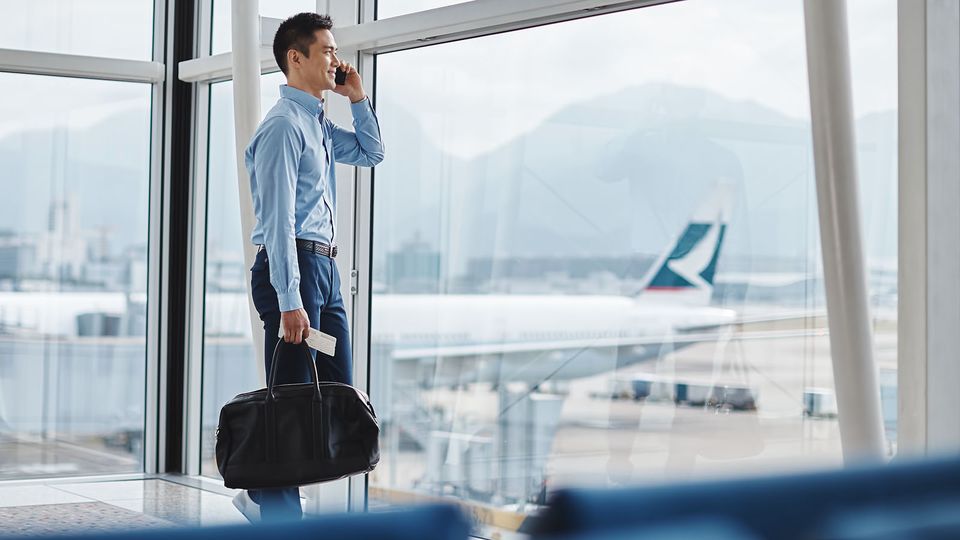
Cathay Pacific intends to stay at HKG T1, which in turn will remain a Oneworld hub.
As things stand, Terminal 1 will certainly remain Hong Kong’s default home of Oneworld.
“Cathay has indicated that they will remain in T1, and then probably (airlines with) more connectivity with them will be over there… and then T2 will be for other use.”
Could this see the possibility for Terminal 2 to become the Hong Kong hub for Star Alliance or SkyTeam airlines? “It could be, yes,” Cheung conceded, adding “we’re looking at pros and cons” of that model.
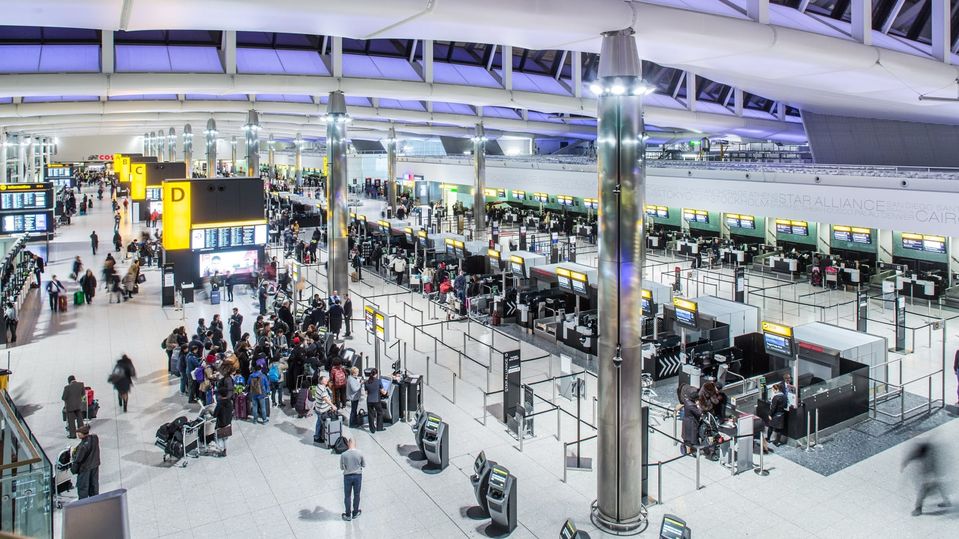
London Heathrow T2 brings together check-in for all Star Alliance airlines.
Those pros could include an integrated check-in area for all alliance member airlines, as seen in London Heathrow’s Terminal 2, where there are rows of self-service check-in machines and desks for all Star Alliance airlines, along with a dedicated row of staffed premium check-in counters.
This also raises the possibility of alliance-branded lounges for first and business class passengers, along with frequent flyers – although Heathrow T2 is an equally good example of this not taking place, as it sports seven airline-specific lounges.
Approached by Executive Traveller, spokespeople for Star Alliance and SkyTeam declined to comment.
“We also have to host quite a lot of the low-cost carriers and those single destination point-to-point type of airlines,” Cheung explained.
Fast-track entry to China
Also under consideration: pre-clearance Chinese customs and immigration facilities which would permit travellers headed for the mainland to arrive in China as domestic passengers.
A similar system is already in place at West Kowloon station, which connects Hong Kong to China’s high-speed rail network via Guangzhou and Shenzhen.
The plan to establish a Chinese gateway at Hong Kong International Airport to streamline travel and bring the Asian metropolis even closer to the mainland.
Cheung admitted “the Government are studying” such a system for HKG, but said “so far we don’t have any plan on this mainline immigration in Hong Kong.”
While a decision “would be in the hands of the Government (so) we’re waiting for (the) Government study… we continue with our strategy that we want to establish more long-haul or more international flights, and we’ll continue to do that.”
David Flynn visited Hong Kong as a guest of the Airport Authority Hong Kong
[ad_2]
Source link
